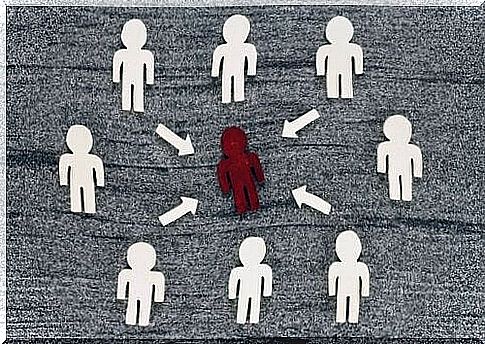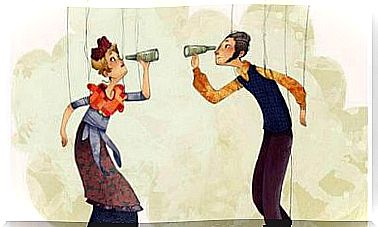Do You Know The Theory Of Social Influence?

The theory of social influence includes any influence on people’s feelings, thoughts or behavior. Therefore, this theory helps us to understand which social situations we have a greater influence on.
Thus, social influence will depend on the social forces that cause the changes, the immediacy of the events and the number of sources that give the effect. The use of social influence varies from disclaimer to social laziness, stage fright or compelling communication.
The theory of social influence
The value of relationships is based on costs and rewards. While costs subtract points from a relationship, rewards add points. On the one hand, rewards give us joy or satisfaction that we enjoy, while costs include any factor that takes away our happiness.
For example, imagine that we are studying for an exam that we have tomorrow. Suddenly a friend calls and we end up wasting all afternoon talking on the phone. The conversation costs us because it has kept us from studying. Therefore, this relationship is considered negative in this case. Our friend influenced us, and this influence is a social influence.

Factors for the theory of social influence
We can explain the theory of social influence using three factors. These factors are:
- Strength: Many individual factors make a person influential. This covers individual factors such as scope, intelligence and wealth. It also includes factors related to relationships that belong to the same group. For example, the relationship we have with a friend.
- Immediacy: It takes into account the recent occurrence of the event, and whether there were other factors that could have affected the outcome. In the example we used earlier, the event was the exam we had to take the next day. But our friend kept us from studying. The immediacy of this example was the time we had for the exam.
- Number of sources: Number of sources refers to the number of sources of influence. In the previous example, the only source of influence was our friend’s call.
The laws of the theory of social influence
The three factors produce three social consequence laws. The first law applies to social forces. This law states that social influence depends on how the three factors in the previous section interact with each other. If any of the factors increase, this greatly increases our social effect. On the other hand, a zero or very low value would mean that there would be virtually no social impact.
The second law is psychosocial. According to this law, the greatest social impact occurs when a single source is shown. This happens when there is no source and one suddenly appears. However, when one or more sources are displayed and an existing source already exists, the sources will have less and less impact. In one study, several people stood in the street staring at the sky. The results showed that the more people who looked at the sky, the more spectators were curious. But that change became insignificant as more people appeared.
The third and final law is multiplication and division of influence. According to this law, strength, immediacy and the number of sources all play a role in societal consequences. In other words, the more power and immediacy, and the greater the number of sources in a given social situation, the more social impact will be shared between the sources. This law explains phenomena such as the division of responsibilities, where people feel less responsible when the number of people around them increases.
Dynamics, the social influence
The rules that govern the theory of social influence describe people as recipients who passively accept social influence. It does not fully compensate for the dynamics involved in social interactions. The social consequence theory tries to discover the unknown factors.
According to this dynamic theory, strength determines social influence, immediacy and the number of sources, as in the previous theory. However, these groups are complex systems that change constantly and are never static. The dynamic social theory reorganized the groups into four basic patterns: consolidation, accumulation, correlation, and sustained resistance. These patterns allow group dynamics to work and ideas are spread throughout the group.
- Consolidation : When people interact with each other, their actions, attitudes and opinions become standardized to each other over time.
- Gathering : People tend to interact with group members with similar opinions.
- Correlation : Over time, the opinions of the individual group members on a number of topics begin to converge and correlate with each other.
- Persistent opposition : If members of a minority group communicate with members of a majority, but resist their influence, there may be some degree of adversity.
These theories help us to understand the influence that other people or groups can have on each other. The theory of social influence says that sources can influence us in our daily lives. Thanks to this theory, we can measure how much they affect us. We can know which factors will affect us the most, and how we can avoid social impact if necessary.









